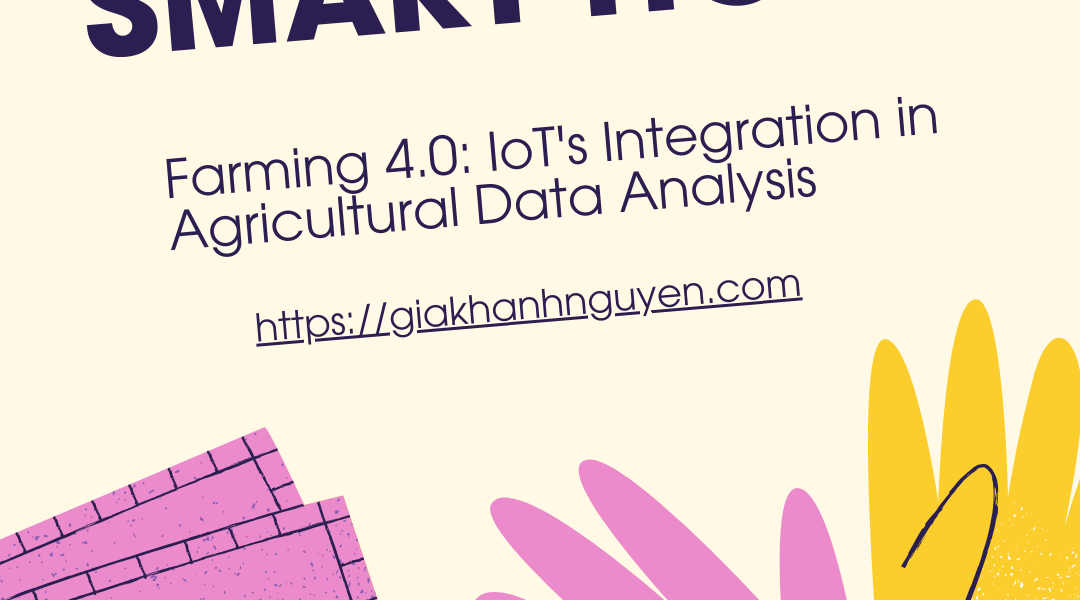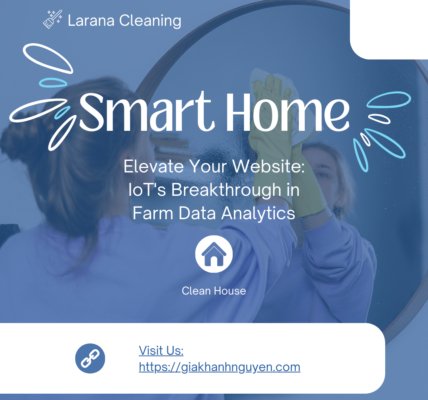The agricultural sector is on the brink of a technological revolution, and at the heart of this transformation is the Internet of Things (IoT). “Farming 4.0: IoT’s Integration in Agricultural Data Analysis” explores how this innovative technology is reshaping agriculture, bringing about efficiency, precision, and a new level of data-driven farming practices.
IoT’s role in agriculture can be likened to a digital nervous system that collects and analyzes data from various sources – soil sensors, weather stations, drones, and satellite images. These devices gather real-time information on soil moisture, nutrient levels, weather conditions, crop health, and more. This wealth of data is then processed using advanced analytics, providing farmers with actionable insights that drive informed decision-making.
One of the key benefits of IoT in agriculture is precision farming. This approach involves using data to precisely manage every aspect of farming – from irrigation to pest control. For example, IoT-enabled sensors can detect the exact moisture content of the soil, allowing farmers to irrigate their crops optimally. This not only conserves water but also ensures that crops receive the right amount of moisture at the right time, leading to improved crop yields.
Another significant impact of IoT is on sustainable farming practices. By enabling farmers to use resources like water, fertilizers, and pesticides more efficiently, IoT helps in reducing the environmental footprint of agriculture. This is particularly important in the context of climate change and the increasing need to adopt eco-friendly farming methods.
IoT also enhances crop monitoring and management. Drones and satellite imagery provide detailed views of the fields, allowing for early detection of issues such as pest infestations or disease outbreaks. Quick action can then be taken to address these issues, minimizing crop losses and maximizing yields.
Despite these advantages, the integration of IoT in agriculture does face challenges. High costs of technology, the need for technical expertise, and concerns about data security are some of the barriers to its adoption. Addressing these challenges requires collaborative efforts between technology providers, agricultural experts, and policymakers. Efforts should be made to develop cost-effective, user-friendly IoT solutions and to ensure that farmers are trained in the use of these technologies.
In addition to the direct benefits to farming practices, IoT integration plays a crucial role in supply chain optimization. By leveraging IoT for tracking and monitoring, the entire journey of agricultural produce from farm to consumer can be traced. This level of traceability ensures higher quality standards, better compliance with safety regulations, and increased consumer confidence in agricultural products. Real-time data provided by IoT devices helps in minimizing waste during transportation and storage, thereby enhancing the overall efficiency of the supply chain.
Furthermore, IoT technologies are instrumental in facilitating data-driven agricultural research and development. The extensive data collected can be analyzed to uncover patterns and insights that were not previously apparent. This information is invaluable in developing more resilient crop varieties, optimizing farming techniques, and formulating strategies to tackle challenges such as pest infestations, diseases, and changing climate conditions.
However, the successful implementation of IoT in agriculture also hinges on the development of robust and reliable communication networks, especially in rural areas. High-speed internet connectivity is a prerequisite for transmitting the large volumes of data generated by IoT devices. Governments and private entities need to invest in improving rural connectivity to ensure the full potential of IoT in agriculture can be realized.
Moreover, there is a growing need for standardization in IoT technologies used in agriculture. Standardizing protocols and technologies will not only ensure compatibility and interoperability among different IoT devices but also help in reducing costs and complexity for the end-users, the farmers.
“Farming 4.0: IoT’s Integration in Agricultural Data Analysis” marks a significant milestone in the evolution of agriculture. The adoption of IoT is not just a technological upgrade; it is a paradigm shift towards more efficient, sustainable, and productive farming practices. As we move forward, the continued expansion and refinement of IoT technologies will undoubtedly unlock even more possibilities, cementing IoT’s role as a cornerstone of modern agriculture. The future of farming, empowered by IoT, looks brighter than ever, promising enhanced food security and sustainable agricultural practices in an increasingly digital world.

